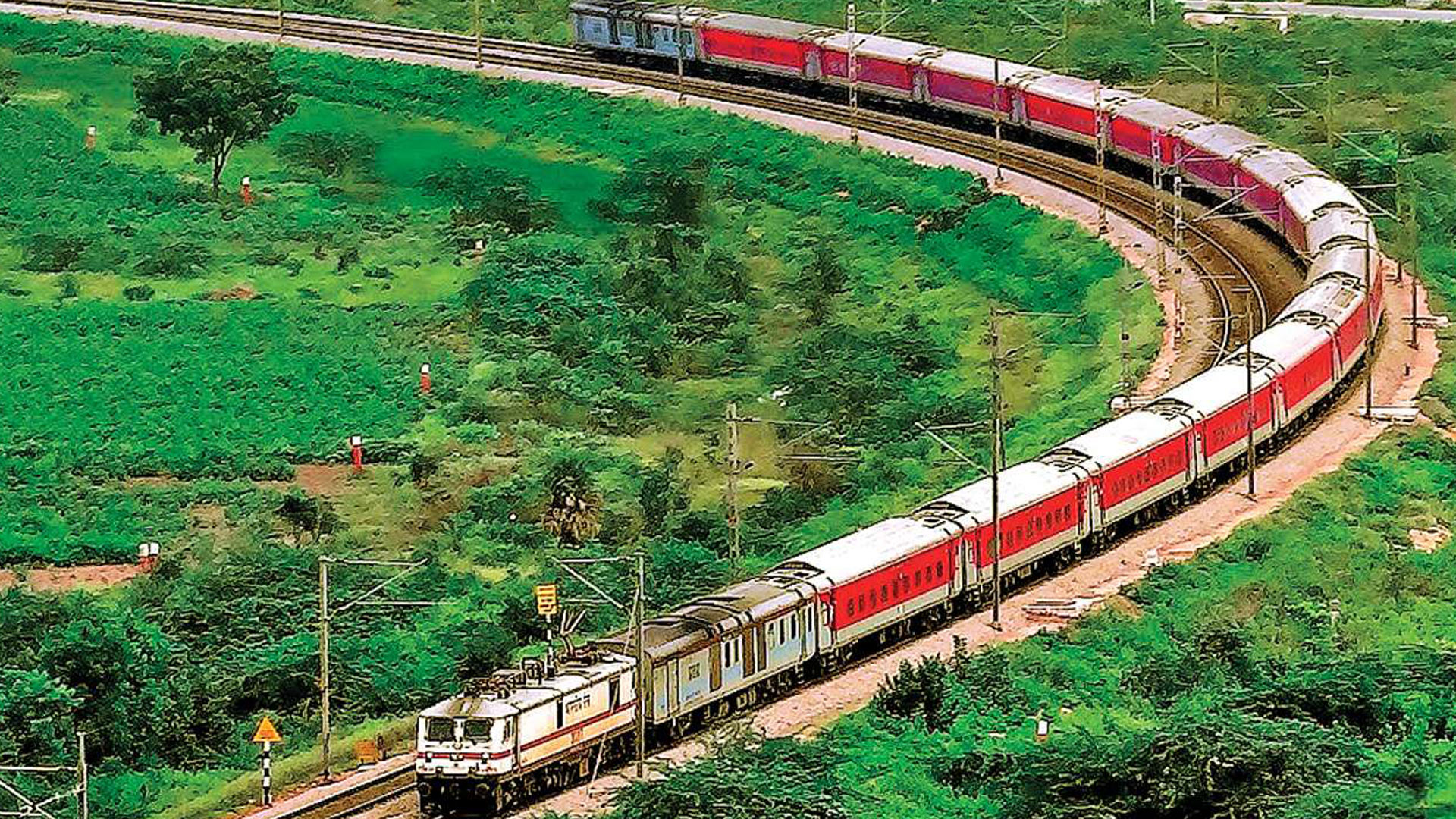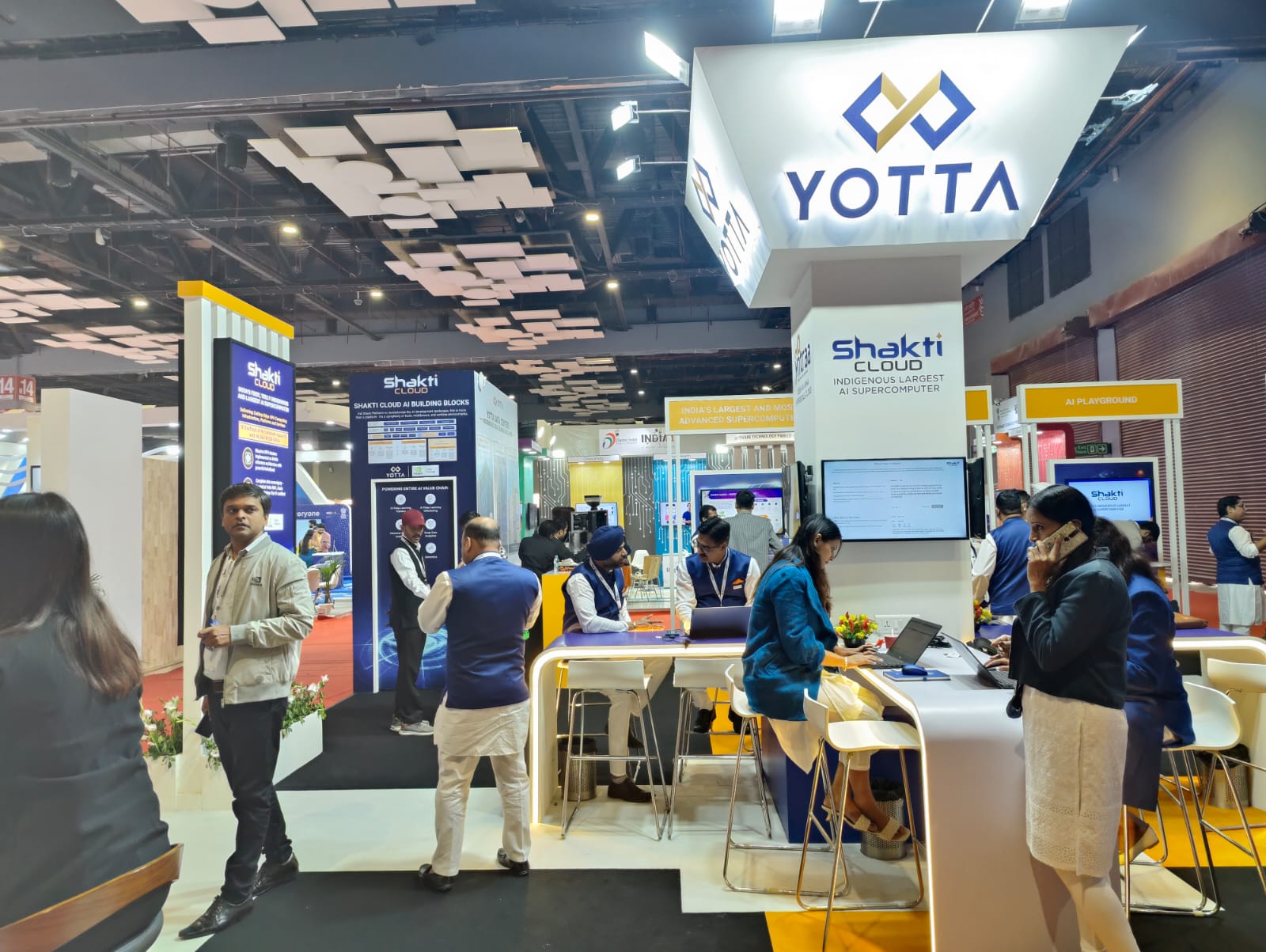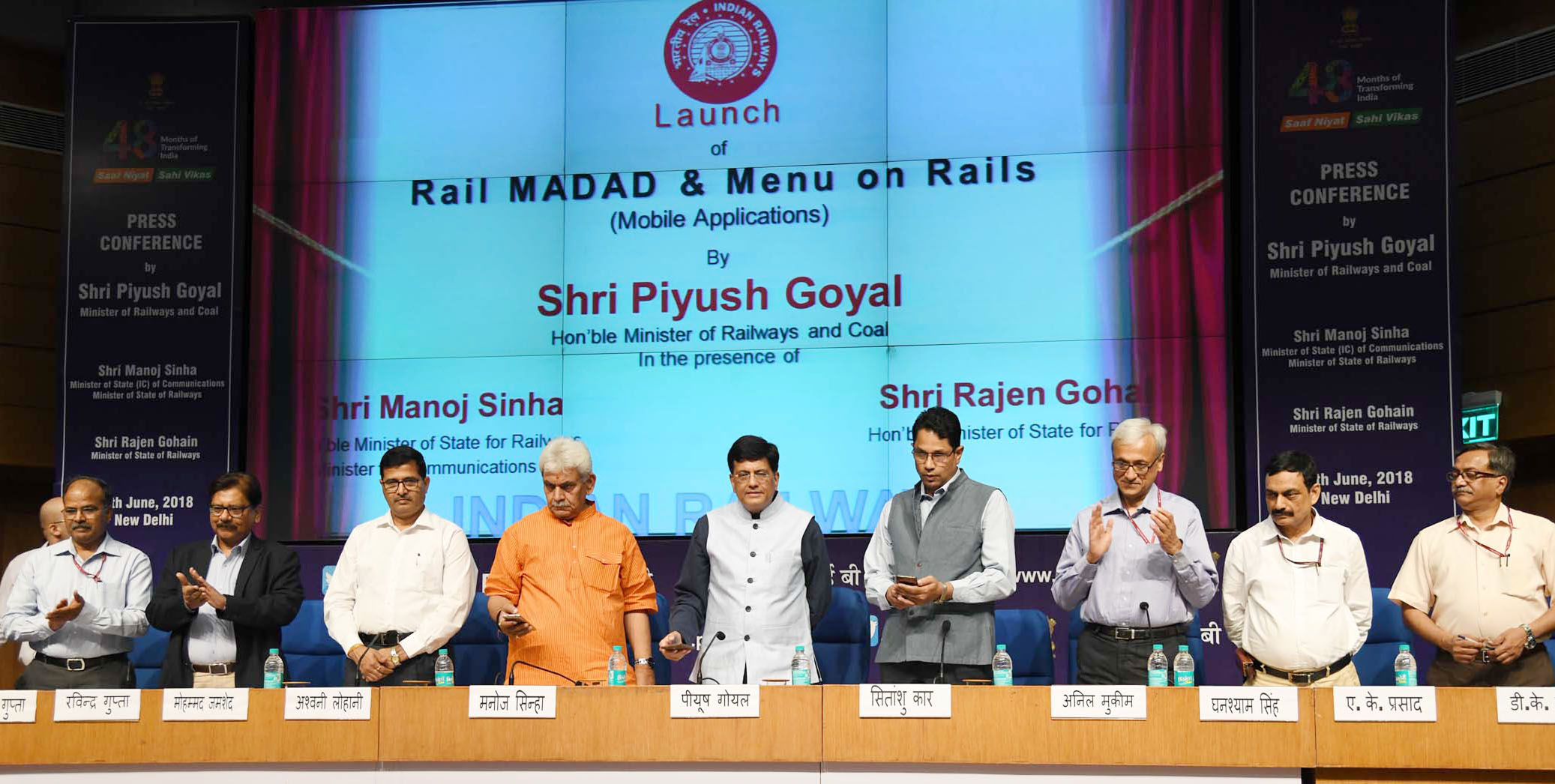News
Spectrum allocation to Indian Railways and provision of more modern signalling solutions to boost all round safety in operations

NEW DELHI: Signalling System enhances safety in train operations. Upgradation and replacement of equipments in use over Indian Railways is a continuous process and is undertaken based on its condition, operational needs and availability of resources.
In order to further improve safety in train operation and generate additional line capacity, modernisation of Signalling System has been taken in hand which includes –
Provision of Electronic Interlocking (EI) to increase Safety and Flexibility – Electronic Interlocking are being adopted on a large scale to derive benefits of digital technologies in train operation and to enhance safety. So far 2221 stations have been provided with Electronic Interlocking upto 30.04.2021 covering 34% of Indian Railways. A policy decision has also been taken to provide Electronic Interlocking (EI) in future. Further, 1550 EIs are planned to be provided in next 3 years. This will enhance safety and efficiency of train operations.
Automatic Block Signalling (ABS) to increase Line Capacity – In order to increase line capacity to run more trains on existing High Density Routes of Indian Railways, Automatic Block Signaling is a cost effective solution. As on 30.04.2021, Automatic Block Signaling has been provided on 3447 Route km. Indian Railways has planned roll out of automatic signalling on around 15000 Rkm of high density and freight intensive routes. The roll out is planned to be undertaken in Mission Mode. With implementation of automatic signalling, increase in capacity will accrue resulting in more train services becoming possible.
Safety at Level Crossing gates – Enhancing Safety at Level Crossing Gates has been a major area of concern. Safety gets enhanced by interlocking level crossings with Signals. As on 30.04.2021 Indian Railways have provided interlocking with Signals at 11705 Level Crossing Gates to enhance the safety at Level Crossings.
Automatic Train Protection (ATP) System as an aid to Loco Pilot to prevent human error – ATP systems are being used by advanced Railway systems in the world as an aid to the Loco Pilots. These systems prevent collisions due to any human error by Loco Pilot. In order to improve safety, a decision has now been taken to provide ATP systems on Indian Railways (IR) in a Mission Mode.
So far IR was dependent on foreign technology for ATP systems. IR with Indian firms has now successfully developed indigenous cost effective technology for ATP – called Train Collision Avoidance System (TCAS). It has been decided to adopt TCAS as the National ATP of India under the ‘AtmaNirbhar Bharat’ Mission of Hon’ble PM. TCAS has been approved for 37300 RKm covering important routes in 1st phase.
The roll out of TCAS will eliminate train collision due to human error and enhance speed potential of IR thereby reducing travel time.
It may be noted that giving a boost to ‘Aatmanirbhar Bharat’ Mission, Government has approved allotment of 5 MHz Spectrum in 700 MHz frequency band to Indian Railways for public safety and security services at stations and in trains.
With this spectrum, Indian Railways has envisaged to provide Long Term Evolution (LTE) based Mobile Train Radio Communication on its route.
The estimated investment in the project is more than Rs. 25,000 Crore. The project will be completed in the next 5 years.
It brings a strategic shift in Railways’ operations and maintenance regime. It will help in improving the safety and increasing the line capacity to accommodate more trains using the existing infrastructure. The modern rail network will result in reduced transportation cost and higher efficiency. Also, it will attract multinational industries to set up manufacturing units to fulfill the ‘Make in India’ Mission and generate employment.
The purpose of the LTE for Indian Railways is to provide secure and reliable voice, video and data communication services for operational, safety and security applications of Railways. It will be used for :
Deployment of Modern Cab based Signalling System with Automatic Train Protection which will increased safety & throughput in train operation. Also, help during fog.
Mission Critical Voice Communication with seamless connectivity in train operations between Driver, Guard, Station Master, Train Traffic Controller & Maintenance staff.
Monitoring Limited Video Surveillance (Live Feed) through CCTV cameras in Trains to enhance passenger security.
For IoT based Asset monitoring specially the rolling stock.
Passenger Information Systems (PIS) in trains & at stations.
In addition to LTE initiative, Other major initiatives in Railway Telecom are:
Wi-Fi facility has been extended at 6002 stations and 101 balance feasible stations will be covered soon. Out of which 70% stations are of rural area.This facility is being used by passengers, local vendors, coolies, etc.
To improve security CCTV System has been provided at 801 stations and balance are also planned.
92% Route of the Railway has been covered with OFC based system (62,205 RKms). This is being used for Railway’s internal communication and spare capacity is being commercially utilized by RCIL.
Indian Railway is deploying e-filing system on a big way. To improve administrative works, e-office has been provided at 185 Units including all Divisions, Zones, CTIs & PUs. More than 1.35 Lakh users are using this and over 15.0 Lakh e-file are created till now. Existing physical files are being converted into digital files.
For above modernization of Signalling and Telecommunication, Indian Railways has envisaged investment of nearly Rs 55,000 crore.
News
Yotta’s Cloud Data Center in GIFT City, Gujarat goes live

NEW DELHI: Yotta Data Services, an end-to-end Digital Transformation service provider, has announced that its state-of-the-art data centre facility, “Yotta G1”, located in GIFT city, Gandhinagar is ready for service (RFS).
The opening of this data center marks the debut of Yotta in Gujarat and progresses the company’s mission to provide digital services in India’s high-growth markets.
G1 is Yotta’s fifth data center facility in the country. It joins four large operational data centers, two of which, at Navi Mumbai and Greater Noida are part of hyperscale campuses. Yotta G1 is uniquely located inside the International Financial Services Center (IFSC) zone of Gandhinagar’s Gujarat International Finance Tec-City (GIFT city).
G1 represents an investment of more than INR 500 cr. over five years across critical non-IT and IT / Cloud / AI compute infrastructure. The data center has a capacity of over 350 high-density racks and 2 MW power (which can be scaled further as per demand). The facility is designed to meet the most demanding digital needs of its customers, who may be located within GIFT City or anywhere in the world, by seamlessly delivering fault-tolerant facility infrastructure, high-performance Cloud compute and storage infrastructure, advanced physical and cyber security, unmatched connectivity, and steadfast sustainability.
For large global enterprises operating in the GIFT City IFSC zone, the G1 data center functions as a potential data embassy, whereby their data stored is subject to the laws and regulations of their home country, thus allowing them to maintain sovereignty over their data, even when stored in India. By storing data in a physically different location, global enterprises can ensure continuity of operations in case of major disruptions within their borders. The data center’s location also ensures compliance with the IFSC regulations, providing businesses in the zone with distinct advantages like free foreign exchange convertibility, a liberalised regulatory environment, and business-friendly policies. It also helps enterprises adhere to IFSC’s compliance requirements, including being mandated to host their data within the IFSC zone.
Commenting on the announcement, Darshan Hiranandani, Co-founder and Chairman, Yotta Data Services, said, “The state of Gujarat, with GIFT City, has been at the forefront of providing a viable and sustainable platform for global businesses to set up base in India. The setting up of the IFSC zone is a further testament to their vision for financial services companies. We are proud to support this vision of the Gujarat government with a state-of-the-art data center within the IFSC zone, providing the latest and best in cutting-edge technologies to help businesses set up and scale their businesses while also adhering to all regulatory requirements.”
Adding to this, Sunil Gupta, Co-Founder, MD & CEO, Yotta Data Services, said, “Yotta’s G1 marks a pivotal milestone in delivering high-end data center, Cloud, AI compute, storage, connectivity and cybersecurity services to enterprises both on a global and local scale in the Gujarat region. Besides serving the domestic enterprises within and outside GIFT City, our data center shall serve as a potential data embassy for global enterprises, enabling them to adhere to their respective country’s laws while offering a dependable and secure locale for offshore data storage.”
G1 data centre stands distinct in GIFT city for being a data center offering more than just colocation services. True to Yotta’s stature as the end-to-end digital transformation partner of choice for enterprises, G1 brings forth a suite of key features, ranging from advanced data security and customised business solutions to an indigenous hyperscale cloud offering, AI-GPU compute offering, state-of-the-art infrastructure, cybersecurity expertise, seamless integration with managed IT services, 24/7 customer support, cost optimisation, and an overall competitive edge.
This announcement follows on the heels of Yotta’s recent launch of its cloud services – Shakti Cloud and Yntraa Cloud. Powered by NVIDIA’s top-of-the-line GPUs, Shakti Cloud is India’s largest & fastest AI-HPC supercomputer, delivering cutting-edge GPU computing infrastructure, platforms, and services, including Infrastructure as a Service, Platform as a Service, and Software as a Service. Yntraa Cloud, on the other hand, is a truly indigenous hyperscale cloud platform at par with global cloud platforms, offering an exhaustive range of cloud products and services.
News
Optiemus Infracom joins hands with Corning International

NEW DELHI: Domestic contract manufacturer Optiemus Infracom has entered into a joint venture with US-based speciality glassmaker Corning International to set up India’s first manufacturing facility for producing high-quality finished cover glass parts for the mobile consumer electronics industry.
The collaboration between both the companies will help expand India’s electronics manufacturing ecosystem, as the Indian government strengthens its Make in India initiative. As a part of the joint venture, the companies strategically aim to set up a world-class manufacturing facility in India, powered by cutting-edge technologies and processes.
Driven by a shared commitment to innovation and technological excellence, this collaboration will pave the way for the manufacturing of “Made in India” finished cover glass parts for use in mobile consumer electronic devices, and other cover glass applications, to meet the needs of next-generation mobile consumer electronic devices.
The joint venture signifies a powerful synergy between Optiemus’s deep domestic industry and manufacturing knowledge of electronics and telecom market and Corning’s globally-acclaimed expertise in advanced glass technology. By combining these strengths, the joint venture aspires to not only establish cover glass manufacturing capabilities and capacity in India, but also to contribute significantly to the creation of jobs and skill development within India’s thriving technology sector, the companies said in a statement.
Ashok Kumar Gupta, Chairman, Optiemus Infracom, said, “It is a matter of great pride for us to actively contribute to the growing manufacturing ecosystem in the country. With this joint venture, initiated in line with the vision of Hon’ble Prime Minister of India of ‘Make in India’ programme and the “Atmanirbhar Bharat” initiative, we are committed to make available world-class high-quality products for global and local brands.”
“Embarking on this new journey, we intend to emerge as one of the top manufacturers of finished cover glass parts for use in mobile consumer electronic devices in the next five years. Our collective expertise in innovation, design, and manufacturing, will provide holistic solutions for the brands,” Gupta added.
5g
MediaTek Catch-up with Tech: Infinix Zero 30 5G with Dimensity 8020 launched

NEW DELHI: Chipset maker MediaTek, which claims to power more than two billion connected devices every year, hosted ‘Catch-up with Tech’ in collaboration with handset brand Infinix on August 28 to share insightful and engaging conversations about the new-age smartphones and innovative technologies powering everyday lives.
The meet-up threw the spotlight on the MediaTek Dimensity Auto, Satellite solutions and Generative AI along with an extensive showcase of newly-launched Infinix Zero 30 5G powered by MediaTek Dimensity 8020, Infinix GT 10 Pro powered by MediaTek Dimensity 8050, and Infinix QLED TV powered by MediaTek.
In terms of specs, the Infinix Zero 30 5G is tailored for young storytellers and creators, featuring the first-ever smartphone to deliver 4K 60fps video recording from its 108 MP OIS rear camera and ultra-high resolution 50MP front camera. The Zero 30 series powered by MediaTek Dimensity 8020 is said to be a game changer for the front camera vlogging experience along with being the slimmest curved AMOLED smartphone in the segment with glass and a vegan leather back panel. It also claims to be one of the most premium-looking devices in the segment.
The event witnessed a panel discussion moderated by Anuj Sidharth, Deputy Director Marketing & Corporate Communications, MediaTek and included expert panelists from Infinix, MediaTek and two renowned professional photographers.
“With the fifth edition of Catch-up with Tech, we aim to bring consumers closer to the technology and enable them to make informed buying decisions based on their diverse needs. In collaboration with Infinix, this meet-up is in-line with MediaTek’s vision of technology democratization and making innovative technology accessible to everyone,” said Anku Jain, Managing Director, MediaTek India. “The MediaTek Dimensity 8020 in Infinix Zero 30 5G brings faster displays, brilliant cameras and ultra-fast performance. Further, MediaTek Imagiq technologies enrich the capture experience by combining dedicated AI, imaging processors and accelerators to provide incredible results,” he added.
Anish Kapoor, CEO, Infinix Mobile India, said, “Featuring India’s first 50MP 4K 60 fps video recording, Infinix Zero 30 5G is primed to redefine smartphone imaging capabilities, setting a new standard for the creators and vlogging enthusiasts. Our collaboration with MediaTek has played a pivotal role in shaping our exceptional smartphone portfolio, and the Zero 30 5G stands as evidence of our unwavering commitment to innovation and delivering unmatched experiences to our users. The display and design of the device represent a leap forward in smartphone technology. As Infinix Zero 30 5G hits the shelves, we are positive that our customers will find this new offering as exhilarating as we do, further empowering creators to capture their story like never before.”
Radhakrishnan Chakyat, a photography evangelist, founder and host of Pixel Viilage, said, “Infinix Zero 30 5G smartphone powered by MediaTek Dimensity 8020 chipset has amazing hardware features, an excellent camera, dual-view video mode and is primed for optimal content creation and saves a tremendous amount of editing time.”
Aarzoo Khurana, a wildlife photographer, said, “Over the last few days, I clicked various pictures and recorded a few videos with the newly-launched Infinix Zero 30 5G powered by MediaTek Dimensity 8020, and the experience has been truly inspiring. Infinix’s smartphone’s OIS feature helps content creators click shake-free pictures and the front camera, which is extremely sharp and detailed, enables content creators to click countless selfies.”









